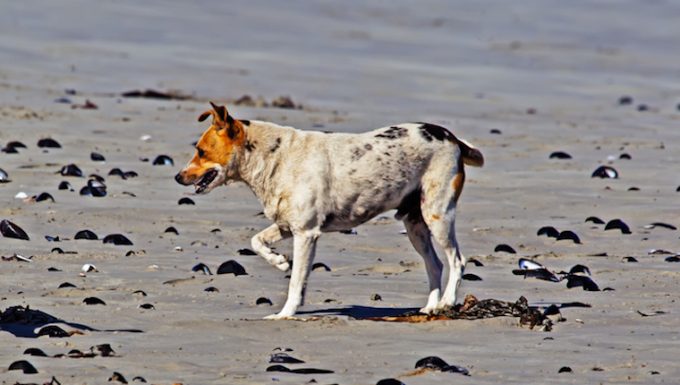Front leg deformity in dogs happens when one front leg carries on growing after the other stops growing. The condition causes pain, swelling, and limping.
Technically, the condition is also known as antebrachial growth deformities.
Additionally, certain breeds seem most at risk of developing it, including Lhasa Apsos, Basset Hounds, and Skye Terriers.
If you see the signs of front leg deformity in your dog, then get to a veterinarian for a proper diagnosis and treatment.
Here’s what you should know about the symptoms, causes, and treatments for the condition.
Symptoms of Front Leg Deformity in Dogs
The condition produces symptoms that affect the legs. For example, some of the most common symptoms include:
- One leg physically longer than the other
- Twisted front leg
- Limping
- Pain and discomfort
- Swelling
- Lameness
- Loss of appetite
Causes of Front Leg Deformity in Dogs

The cause of the condition can be one of many things. For instance, some of the most common causes include:
Trauma
Nutritional deficiencies (especially a lack of vitamin D)
Elbow malalignment syndrome
Osteochondrosis
Additionally, the following breeds are most likely to develop the condition:
- Skye Terrier
- Labrador Retriever
- Golden Retriever
- Rottweilers
- Basset Hound
- Lhasa Apsos
- Bernese Mountain Dog
Treatments for Front Leg Deformity in Dogs
Firstly, your vet will ask about your dog’s symptoms and medical history. Secondly, your vet will conduct a physical examination of your dog.
Thirdly, X-rays of the front legs will be taken. These will show up any abnormalities, swelling, and muscle issues.
Blood and urine tests will also be taken. The subsequent results of the tests can show how much iron is in your dog’s blood.
Treatment depends on the cause of the condition. For example, in cases involving a trauma, surgery to fix the problem will be recommended. However, if your dog was born with the condition, diet changes and measures to reduce any pain will be suggested.
In general, researching your dog’s breed history before adopting can help to lower the chances of experiencing the condition.
Have you ever cared for a dog who suffered from this condition? How did your vet help your dog recover? Let us know in the comments section below.




